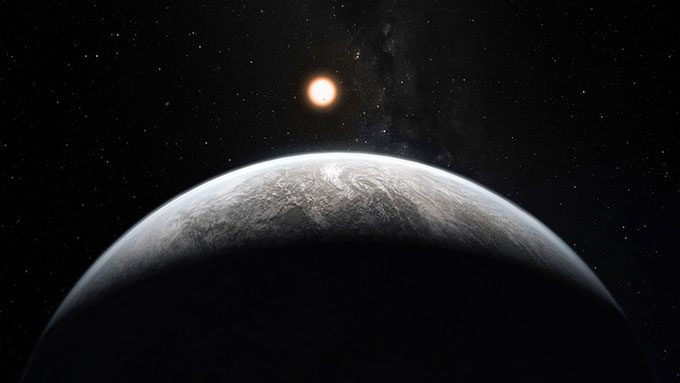Scientists have discovered an exoplanet with a temperature similar to Earth orbiting a red dwarf star located 90 light-years away.
In a study published in the Astronomical Journal, astronomers from NASA’s Jet Propulsion Laboratory (JPL) and the University of New Mexico named the new exoplanet TOI-1231 b. This celestial body is nearly the size of Neptune, weighs 15.4 times more than Earth, and takes 24.2 days to complete one orbit around the red dwarf star M3 NLTT 24399.

Simulation of the newly discovered exoplanet. (Image: ESO/M. Kornmesser).
TOI-1231 b was discovered and monitored by the Transiting Exoplanet Survey Satellite (TESS) and the Planet Finder Spectrograph (PFS) on the Magellan Clay Telescope at the Las Campanas Observatory in Chile.
“The exoplanet orbits its host star at a distance of 0.1288 astronomical units, which is only 1/8 of the distance from Earth to the Sun, yet its temperature remains similar to that of Earth. This is due to M3 NLTT 24399 being cooler and less luminous than our Sun,” said Assistant Professor Diana Dragomir from the Department of Physics and Astronomy at the University of New Mexico.
Previous studies have indicated that cool planets may have clouds in their upper atmospheres, making it challenging to determine the types of gases surrounding them.
“TOI-1231 b is one of the rare exoplanets known to have a temperature range similar to Earth. Therefore, future observations of this celestial body could help us determine the prevalence (or rarity) of water vapor clouds forming around cool planets,” emphasized NASA JPL scientist Jennifer Burt, the lead author of the study.
The low density of TOI 1231 b suggests that it has a significant atmosphere surrounding it rather than being a barren rocky planet. However, its composition and density are still not well understood. The research team speculates that this atmosphere may consist of hydrogen, hydrogen-helium, or dense water vapor.
“Each component of the atmosphere has a different origin, allowing astronomers to understand how exoplanets form around red dwarfs differently compared to planets orbiting the Sun. Our upcoming observations with the Hubble Space Telescope will address these questions,” Dragomir added.





















































